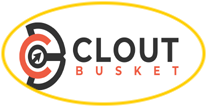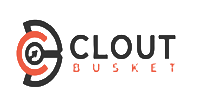Revolutionizing Education and Learning: A Guide to Modern Methods and Lifelong Growth
Education is changing fast. As the world moves forward, new methods and technologies reshape how we learn. This guide explores the modern landscape of education, effective strategies for learning, the role of technology, and the importance of continuous growth.
The Ever-Evolving Landscape of Education
Traditional vs. Modern Education Systems: A Comparative Analysis
Globally, governments spend about $5 trillion on education each year. Enrollment rates have increased, with over 1.5 billion students attending schools worldwide. Compare this to Finland’s education system, which has become a model of success by focusing on student well-being and employing highly qualified teachers.
The Rise of Online Learning and its Impact
The online learning sector has exploded, with platforms like Coursera, Udemy, 10 Minute School, Shikho, Eshikhon, seeing enrollment rise to over million users combined. Online learning offers flexibility and accessibility but poses challenges such as the lack of personal interaction and self-discipline. Understanding the pros and cons helps learners choose the best path for their needs.
The Future of Education: Emerging Technologies and Trends
Emerging technologies like artificial intelligence, virtual reality, and augmented reality are transforming classrooms. For instance, schools using VR can take students on virtual field trips, making learning interactive. Personalized learning, adjusted to individual needs, is becoming more popular, enhancing each student’s educational journey.
Enhancing Learning Through Effective Strategies
Active Recall and Spaced Repetition Techniques
Active recall involves retrieving information from memory. Studies show this method boosts retention significantly. Spaced repetition, which revisits information over increasing intervals, complements this. Integrate these techniques into study routines for maximum effect. As cognitive psychologist Dr. Barbara Oakley says, “Repetition is the mother of retention.”
Collaborative Learning and Peer Interaction
Learning in groups enhances understanding. Collaborating allows students to share insights and tackle complex topics together. Projects like “Group Study Days” can help students bond while learning.
Importance of Personalized Learning Plans
Every student learns differently. Personalized learning addresses these variations. Tips for creating a plan include setting clear goals, choosing preferred learning methods, and regularly reviewing progress.
The Role of Technology in Modern Learning
Utilizing Educational Apps and Software
Educational apps have revolutionized learning. Popular ones like Duolingo and Khan Academy offer interactive ways to grasp new subjects. Their features enable users to track progress and learn at their own pace, making education engaging.
Embracing Online Resources and Digital Libraries
Digital libraries like Project Gutenberg provide access to thousands of books. Utilizing reputable sources like these can enhance research skills and provide valuable information.
The Power of Educational Games and Simulations
Gamification in education makes learning fun. Games like Minecraft: Education Edition encourage creativity while teaching subjects such as math and science. They are effective tools for engagement and understanding.
Overcoming Common Learning Challenges
Effective Time Management and Organization
Time management is crucial for learning. Students can use planners and apps like Todoist to schedule study sessions. Techniques like the Pomodoro Technique can also enhance productivity.
Strategies for Improved Focus and Concentration
To boost focus, try methods like eliminating distractions and using the two-minute rule. Research shows mindfulness practices, like meditation, can improve concentration and retention.
Addressing Learning Disabilities and Individual Needs
Support for students with learning disabilities is vital. Strategies include tailored instruction and specialized resources, providing these students with the tools they need to succeed.
Lifelong Learning and Professional Development
The Importance of Continuous Learning in the Modern Workplace
In today’s job market, continuous learning is essential. Studies show that workers who engage in professional development earn more and advance faster. Embracing continuous education leads to career growth and adaptability.
Finding the Right Learning Resources and Opportunities
Identifying the right courses can be daunting. Use platforms such as LinkedIn Learning or Udemy to find relevant professional development opportunities. Look for courses that offer certifications to enhance qualifications.
Building a Personal Learning Plan for Long-Term Growth
Creating a personal learning plan involves setting long-term goals and identifying resources. Steps include:
- Define your career aspirations.
- Identify skills needed for advancement.
- Research courses and materials.
- Schedule regular reviews for progress tracking.
Conclusion: Embracing a Future of Continuous Learning
Education is no longer confined to classrooms. Embracing modern learning methods opens doors for personal and professional success. Implementing the strategies discussed can sharpen skills and enhance growth. Start today; the journey of lifelong learning awaits.




